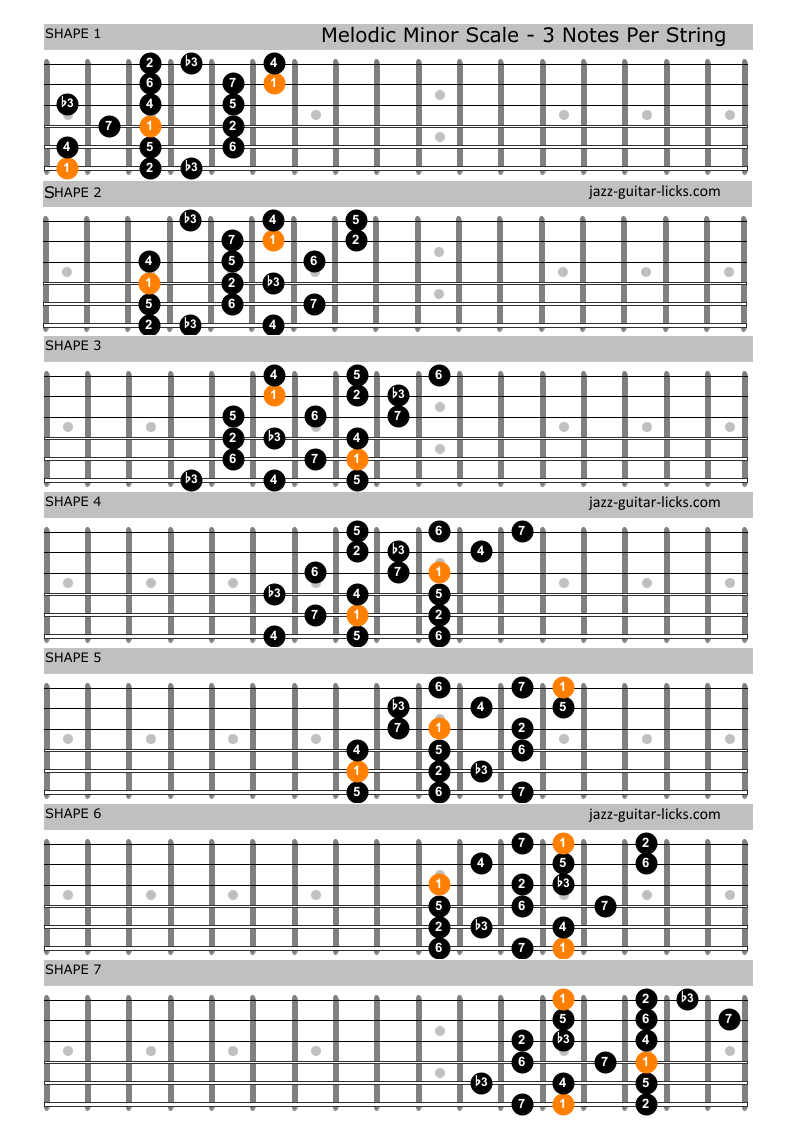

The notes of the harmonic minor scale are the same as the natural minor except that the seventh degree is raised by one semitone, making an augmented second. The harmonic minor scale works great over minor II-V’s. Melodic minor scales raise both the sixth and seventh notes one semitone when ascending, but when descending, the sixth and seventh notes are flattened, producing the natural minor scale. Colored circles mark the tones in the diagram, the darker ones highlighting.

In addition to simplifying the way you think about a II-V-I, the harmonic major automatically liberates you from that often droll “church mode” sound and gets you playing a hip, “exotic” sounding scale. The B Harmonic Minor is a seven-note scale.
#GUITAR NATURAL HARMONIC MELODIC MINOR SCALES PLUS#
It works over all three chords and has a strong sense of tonality and unity. Harmonic minor scale, plus natural and melodic minor scale, FREE download. The harmonic minor is perfect for generating hip II-V-I lines because it has the b9 and b13 of the V7 chord embedded in it and it allows you to simplify the entire II-V-I into one single reductive scale. When you use this scale over a minor II-V-I in C minor, you end up with a D Locrian (natural 6) scale over the II (half dim.) chord, a G Phrygian (natural 3) scale over the V7 chord, and C Aeolian (natural 7) – the tonic harmonic minor – over the I- chord. The melodic minor come about because of the large interval jump in harmonic minor. Over the Emin7 chord, theory suggests using E natural minor scale to avoid the natural 7th contained in the harmonic minor scale. That’s basically the reason for the Harmonic minor scale.

It happens to be the b7 in the scale so we raise it to a major 7 to match the new chord. have a tremendous increase in your total technical skills on the guitar. When we do this, our minor scale now has a clashing note when we play the G7. You can read my recent post for a recap of what the harmonic minor scale is and how it’s derived. There are three forms of the minor scale: natural, harmonic and melodic minor. The harmonic minor scale is used a lot in jazz, especially in vocabulary from the bebop and hard bop eras (the melody to “Donna Lee” is just one example). I kept this as a separate post because the harmonic minor is so specialized that it deserves its own dedicated post. In this post, I want to cover more in depth the main way the harmonic minor scale is often used over II-V-I’s. I have also mentioned the harmonic minor scale in passing when talking about minor II-V-I’s. The scale is identical with the Major scale apart from the minor third. The A Melodic Minor is one of three A Minor scales, the other two are A Natural Minor and A Harmonic Minor. For that reason, it is also known as the Ascending Melodic Minor. In my recent post on the harmonic major scale, I talked about ways to construct II-V-I lines using one single scale. This scale has an unusual aspect: it ascends as described above but descends as the Natural Minor.


 0 kommentar(er)
0 kommentar(er)
